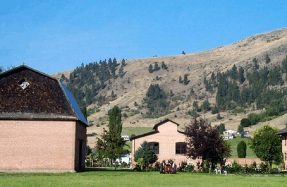Lill’s Story


Getting to Bloedel
When Normal School was over, I had to face the problem of finding a job. This was in 1933, at the depths of the Depression, and there were few schools available, especially for new teachers without experience. Whenever there was a job advertised in the paper everybody applied. I used to write applications on an old typewriter, using carbon papers to get additional copies. Of course, the main application was done in my own, very best, McLeans-method handwriting. I wrote over sixty-five applications, but received no acknowledgements, let alone a job.
One day at the end of the summer I was walking in town and met Eleanor Anderton, the sister of an old friend who had been with me at public school. Eleanor, who had been teaching during the year at a school in the interior of BC, was looking very sad, and explained that she was on the way to the telegraph office. She had just been offered a job much closer to home, but, being after an August 15th deadline and too late to cancel her present job, she was obliged to refuse it.
I got very excited, and persuaded her to wait until I was able to get some money from my father who worked at the Canadian Pacific Railway machine shop on Belleville St. and go with her to the telegraph office. Then, as she sent the message refusing the new offer, I sent one saying I would accept it. A reply soon arrived saying I was appointed, and that they would expect me to report the following Monday at Bloedel, at the north end of Vancouver Island. I had never heard of the place before and called it “Blow-ee-del”. This was a Saturday morning, to be followed by Labour Day on the Monday, and I had to be there ready to start teaching the following day, September 4, 1933.
I had a very busy weekend, getting clothes and books ready. Mom let me have the old
You’re reading a preview, subscribe to read more.
Start your free 30 days

